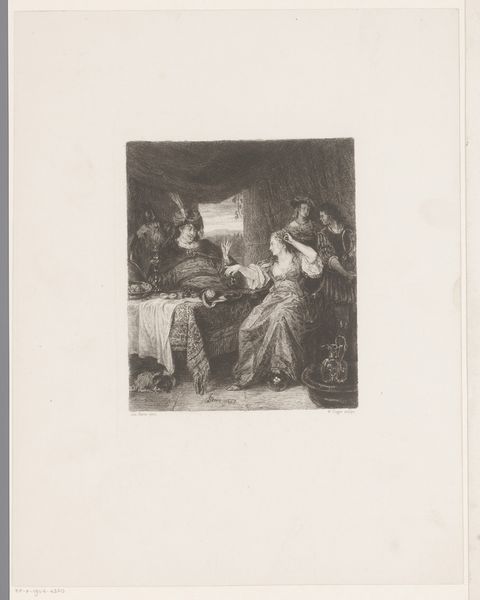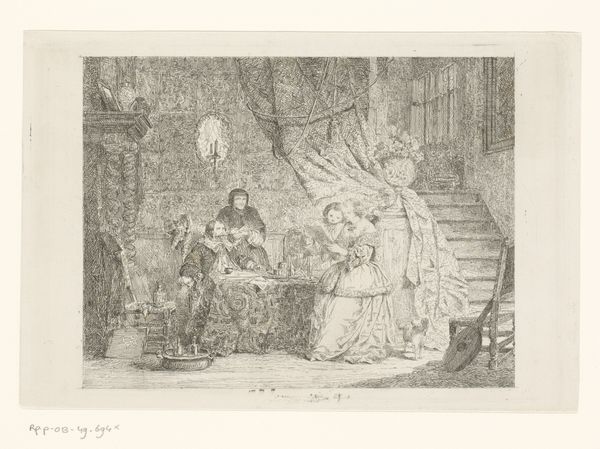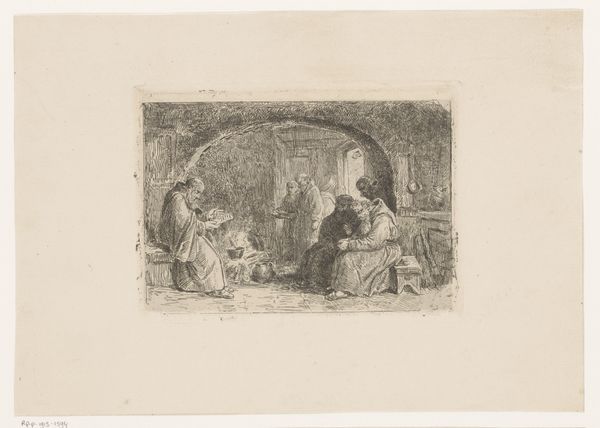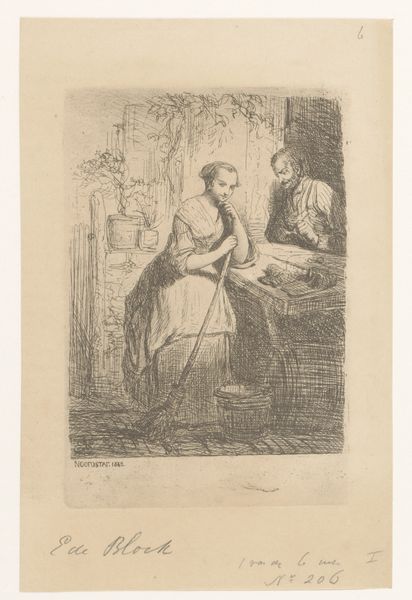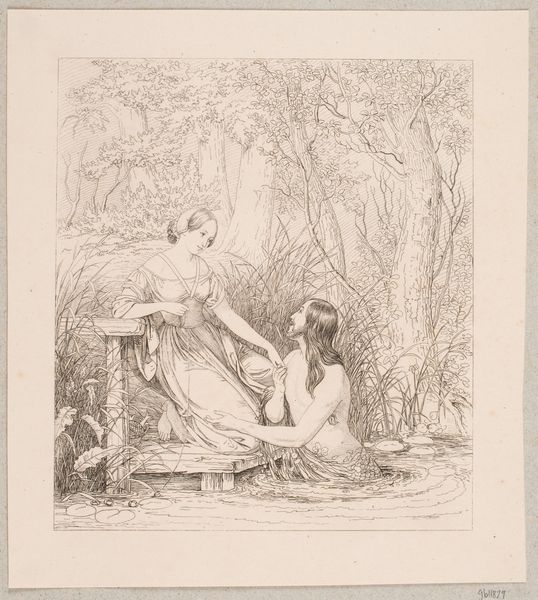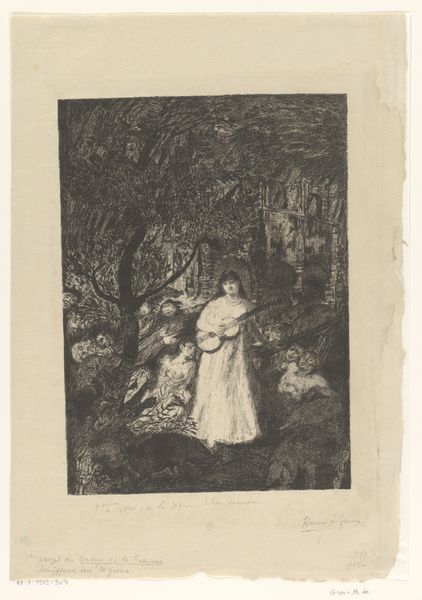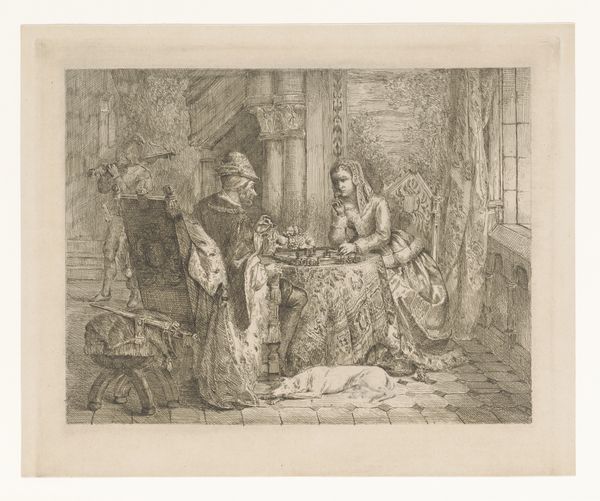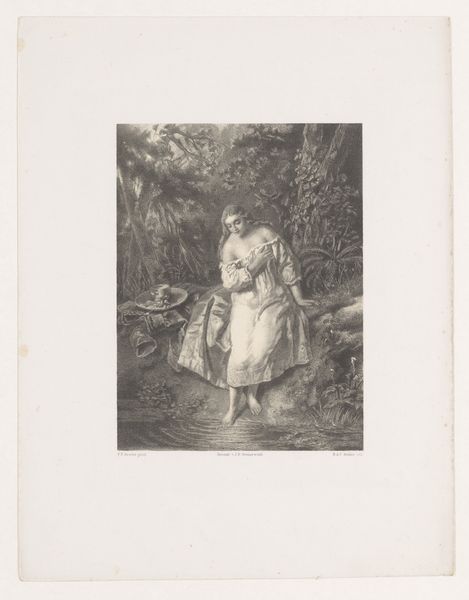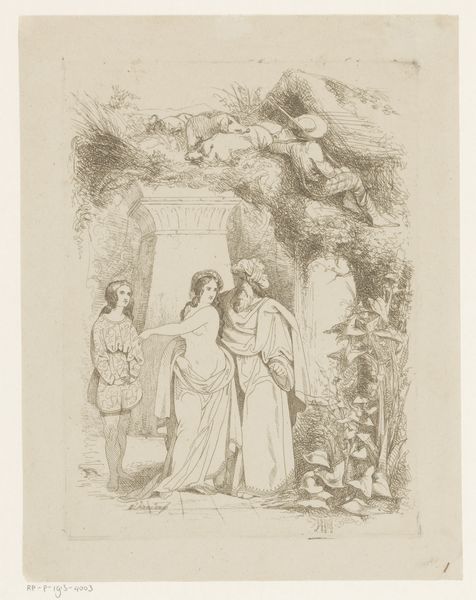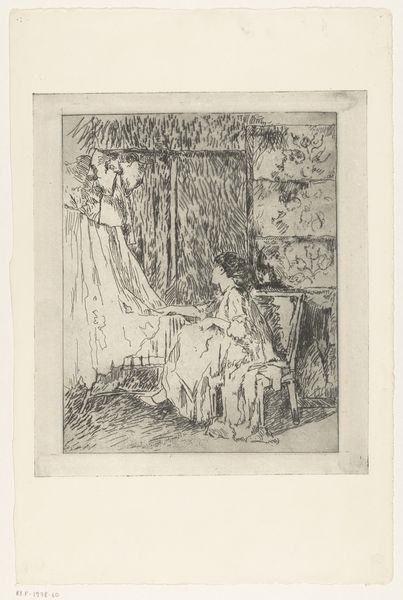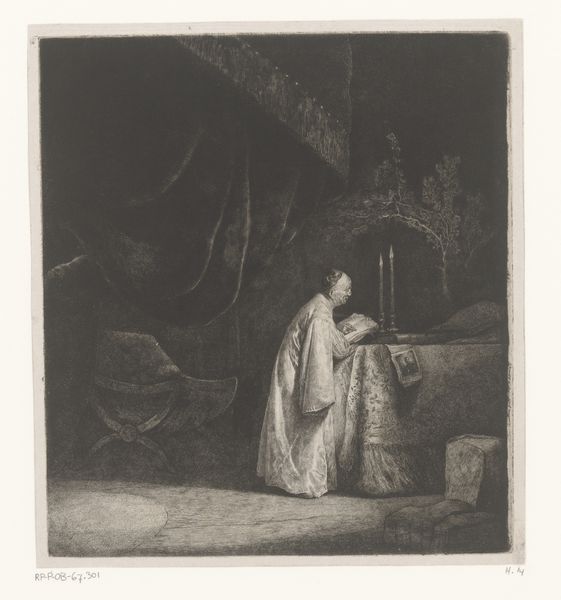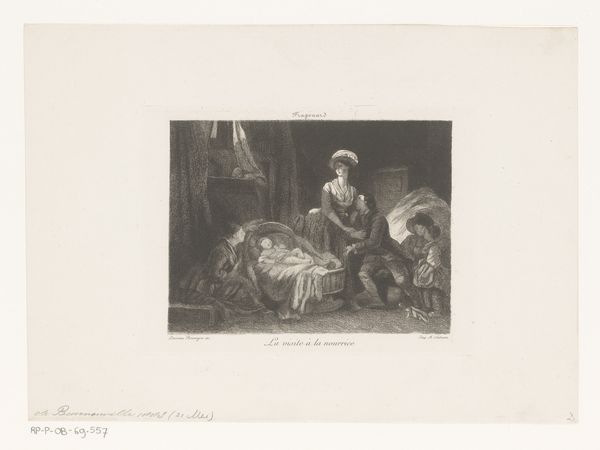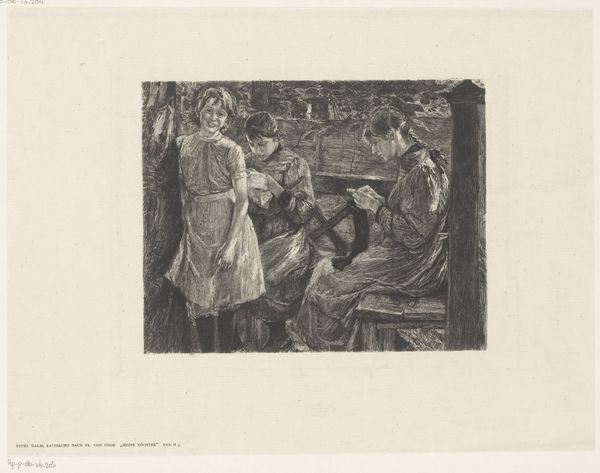
drawing, print, etching
#
drawing
#
narrative-art
# print
#
pen sketch
#
etching
#
pencil sketch
#
old engraving style
#
figuration
#
form
#
romanticism
#
line
#
history-painting
Dimensions: height 102 mm, width 148 mm
Copyright: Rijks Museum: Open Domain
Curator: Welcome. We're looking at Eugène François de Block's "Young Woman Among Druids at a Sacrifice Table," an etching from 1842. It's held at the Rijksmuseum. Editor: My first thought is of a faded dream. The delicate lines create an ethereal, almost ghostly quality. Curator: Yes, there's definitely a Romantic sensibility at play here. It's tapping into a fascination with the ancient past and what it signifies. That innocent-looking young woman placed in that sinister context, for example—the composition guides your eye to the implied threat. Editor: Sinister indeed! The rough table—presumably the altar—feels particularly weighty. The druids, sketched with quick strokes, have this intense concentration around the labor implied: offering. Was paper readily available then? I’m thinking about access to materials… Curator: Paper was widely available. De Block utilized etching to engage with history and myth, specifically referencing the symbolism of druidic rituals and beliefs within Romanticism. The pen's line itself almost feels ritualistic, as a form of production but also reflection. Notice the contrast between the dark figures and lighter background—it reinforces the conflict. Editor: Right. Look at how that heavy, dark tree looms over the young woman, but she also contrasts with the darker shapes huddled behind the altar table. You almost want to touch that roughly hewn stone and sword! The implied touch brings us closer to their activity of sacrifice. Curator: Precisely. The sword symbolizes sacrifice, while the surrounding druids represent a societal order. The young woman seems to represent innocence threatened, perhaps a challenge to tradition itself. Editor: Hmmm... so the ritual becomes a spectacle through its material representation. How it uses the marks left by etching to draw in its audience is fascinating, not only due to subject matter. It highlights what a shift this implied process represented when the art piece was produced. Curator: Precisely, what's lost in that transition but also what's gained in creating accessibility? The visual representation keeps these traditions and cautionary tales alive. It reminds us of the power symbols can hold. Editor: It's thought-provoking to see how a historical moment gets translated into lines etched onto paper, a material meditation on process and historical memory. Curator: Absolutely, thank you for delving deeper into the imagery and context of de Block's work. It makes one contemplate how cultural memories continue to impact and inspire us.
Comments
No comments
Be the first to comment and join the conversation on the ultimate creative platform.
